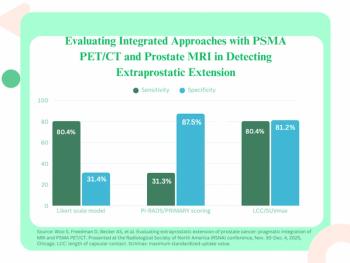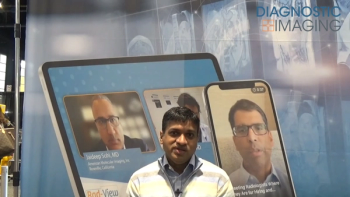
MR imaging of knee at 7T overcomes limitations of 1.5T exams
German researchers have developed a protocol for MRI of the knee at 7T that reportedly allows visualization of all relevant anatomical structures and the most common pathologies.
German researchers have developed a protocol for MRI of the knee at 7T that reportedly allows visualization of all relevant anatomical structures and the most common pathologies.
Accurate diagnoses of the musculoskeletal system are important because diseases of the joints cause a high morbidity in both older and younger patients. MRI at a field strength of 1.5T has its limits, especially in small structures like articular cartilage, and 7T systems can provide increased signal-to-noise ratio and higher spatial resolution, according to Dr. Oliver Kraff with the Erwin L. Hahn Institute for MRI at Duisburg-Essen University, Essen.
"Measurement protocols optimized for MRI at field strengths of 1.5T and 3T cannot be directly transferred to 7T," he told ISMRM-ESMRMB delegates. "Specific absorption rate limitations, different relaxation times of the tissues, and new image artifacts (e.g., due to enhanced susceptibility effects) require adjustments of the sequence parameters."
All measurements at Essen were performed on a Magnetom 7T whole-body system from Siemens Medical Solutions, using a CP knee coil from Invivo for transmit and receive. Starting with sequences used in a 1.5T knee protocol, the parameters were modified to obtain optimal image contrast, full coverage, and the highest resolution within a reasonable acquisition time. The knee protocol was first optimized on two healthy volunteers and subsequently tested on 10 patients with pathologies.
For the STIR sequence, an inversion time of 250 msec was needed for optimal fat suppression at 7T. TE was set to 33 msec because a higher TE would have created more prominent susceptibility artifacts. A T1-weighted 3D FLASH data set covering the entire extremity yielded very high spatial resolution for a good anatomic overview, Kraff said.
The specific absorption rate (SAR) becomes a major issue in double-echo TSE sequences due to the large flip angle of 150º, resulting in a limit of only a few slices per acquisition. Choosing a low SAR RF PULSE leads to an improved outcome without reducing image quality. Several measurements are necessary for complete coverage. Gradient echo sequences, particularly MEDIC, seem particularly suitable for assessment of cartilage pathologies, and a DESS sequence has been tested to display cartilage lesions.
The protocol rendered excellent image quality at 7T, and enabled better visualization of meniscal tears and cruciate ligaments.
"The contrast between the lesion and the normal cartilage is higher at 7T compared with 1.5T," he said. "Also, DESS and double-echo TSE render good contrast and high resolution for assessing cartilage degeneration."
Using this protocol, the total data acquisition for the whole knee is about 45 minutes. No improvement was observed for osseous lesions using the STIR sequence.
Newsletter
Stay at the forefront of radiology with the Diagnostic Imaging newsletter, delivering the latest news, clinical insights, and imaging advancements for today’s radiologists.



























